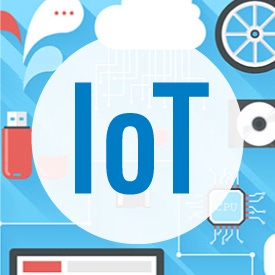
LONDON -- Smart IoT London -- A trigger event akin to the 2007 arrival of the iPhone will be the catalyst for an Internet of Things (IoT) boom, according to William Webb, the CEO of the Weightless Special Interest Group, which is looking to play a key role in the market for low-power, wide-area network (LPWAN) technologies.
Speaking on a panel at this week's Smart IoT London exhibition, Webb expressed skepticism about various forecasts of the number of connected devices there will be in the next few years, noting how wrong analysts had been about mobile data in the run-up to the licensing of 3G technology.
"Everyone predicted it would be a great thing in 2000 and nothing happened until the iPhone was launched in 2007, and it's now vastly bigger than anyone expected in 2000," he said. "I think some trigger event will happen [in IoT] and it will be much bigger [than anyone expects]."
While Cisco Systems Inc. (Nasdaq: CSCO) and Ericsson AB (Nasdaq: ERIC) have been linked with predictions there will be 50 billion connected devices in use by 2020, analyst firms have been a little more restrained in their forecasting. Gartner Inc. expects the number to rise from 6.4 billion this year to about 20 billion in 2020, while Machina Research -- whose CEO Matt Hatton featured on the same panel as Webb -- reckons it will grow from about 5 billion today to around 25 billion in 2025.
Elaborating on what an IoT "trigger" might entail, Webb said it could be the emergence of a very low-cost chip that could be included in just about any device to support connectivity. "That could change the world dramatically," he said.
Machina's Hatton, however, said the IoT market was too diverse for a single trigger to fuel growth in all parts of the industry, noting the considerable differences between the smart-metering and automotive markets to illustrate his point. "Incredibly cheap sensors are all very well for environmental sensing but not for connected cars," he said. "We have to allow for a bit of diversity."
As someone backing an open standard, Webb also believes proprietary technologies are ultimately doomed in the IoT business and that only two open connectivity standards will survive in the long run -- one supporting connections on licensed spectrum and the other catering to unlicensed spectrum needs.
Unsurprisingly, Webb tips Weightless as the technology that will triumph in the unlicensed area.
Want to know more about the Internet of Things? Check out our dedicated IoT content channel here on Light Reading.
Based in the UK city of Cambridge, the Weightless SIG draws support from some major technology players, including chip designer ARM Ltd. and systems integrator Accenture , but faces competition from rival LPWAN technologies such as Sigfox , a proprietary alternative, and LoRa, whose most prominent backers include French operators Orange (NYSE: FTE) and Bouygues Telecom . (See Orange Hails LoRa Breakthrough as Bouygues Ups IoT Game.)
All three claim to be able to support low-bandwidth IoT applications at a fraction of the cost of existing cellular technologies.
The question is whether they will be able to maintain that advantage as low-power and wide-area capabilities make their way into forthcoming versions of LTE technology. Orange has already hinted that LoRa may be a short-term solution until cellular alternatives using licensed spectrum appear. (See LoRa May Not Be for Long Haul at Orange.)
In the meantime, operators face criticism that current pricing models are holding back the development of certain types of IoT services.
Guy Summers, the head of M2M connectivity for Spain's Telefónica , acknowledged concerns while speaking on the same panel as Webb and Hatton. "It's a fair point," he said in response to audience questions. "When we get LTE-M then business models will probably change and we'll get lower price points but we have to invest an awful lot in our networks to do it."
LTE-M is one of the low-power LTE specifications aimed at making 4G a friendlier technology for the IoT.
During February's Mobile World Congress in Barcelona, US giant AT&T Inc. (NYSE: T) announced plans to conduct trials of LTE-M in the next few months. (See AT&T to Test 4G Specs for Unwiring IoT.)
— Iain Morris, 

 , News Editor, Light Reading
, News Editor, Light Reading
Read more about:
EuropeAbout the Author(s)
You May Also Like











